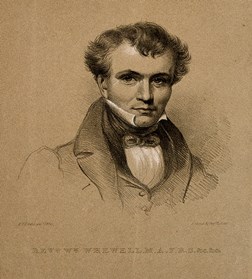Geologist and science writer Nina Morgan peer reviews a pioneering publisher
 Scientific publishing, in the form that we know it today, only really came into its own at the beginning of the 19th Century – and top of the new-style publishing pops was the Geological Society of London. The Transactions of the Geological Society (‘Trans. Geol. Soc.’) was the first important journal focusing on a single scientific discipline. Its introduction in 1811 seriously ruffled the feathers of the Royal Society, publishers of the much older Philosophical Transactions of the Royal Society (‘Phil. Trans.’), who viewed the upstart Trans. Geol. Soc. as a challenger to the Royal Society's position as a central forum for scientific communication.
Scientific publishing, in the form that we know it today, only really came into its own at the beginning of the 19th Century – and top of the new-style publishing pops was the Geological Society of London. The Transactions of the Geological Society (‘Trans. Geol. Soc.’) was the first important journal focusing on a single scientific discipline. Its introduction in 1811 seriously ruffled the feathers of the Royal Society, publishers of the much older Philosophical Transactions of the Royal Society (‘Phil. Trans.’), who viewed the upstart Trans. Geol. Soc. as a challenger to the Royal Society's position as a central forum for scientific communication.
Picture: Lithograph of William Whewell by E U Eddis, 1835. Wellcome V0006265. Wikimedia Commons.
Members of the Geological Society were also arguably the first to introduce the concept of peer review prior to publication. George Greenough [1778 – 1855; from 1807 – 1807, the Society's first President, and from 1818 – 1820, its fifth President] is credited with introducing the term 'referee', a word taken from the legal lexicon, into the science vocabulary in 1817. But it is William Whewell [1794 – 1866], who served as the Society's 15th President 1837 – 1839, who really started the peer review ball rolling.
Peer pressure
By his early 20s, Whewell had gained an impressive reputation for intellectual prowess in mineralogy and a wide range of other scientific disciplines. Already a Fellow of the Royal Society, he was admitted to the Geological Society in 1827. In 1828 he became professor of mineralogy at Cambridge. Then in 1841, in an appointment that may have had more to do with politics than his formidable intellectual and scientific abilities, Whewell pipped his senior Trinity colleague, Adam Sedgwick [1785—1873; 11th President of the Geological Society from 1829 – 1831] to the post of Master of Trinity College Cambridge. This success appears to have gone to Whewell's head. In 1845 he chided his rival by writing: “your frequent appearance in the College courts accompanied by a dog [Sedgwick's pet] is inconsistent with … Rules [of the College]”
Loggerheads
A growing confidence in his own abilities may have been one reason why in 1831 Whewell convinced the Royal Society that they should commission reports on all papers sent for publication in Phil. Trans. Whewell volunteered to collaborate with the mathematical astronomer and fellow Cambridge academic, John William Lubbock, to write this first prototype peer review. The paper chosen was George Airy's magnum opus 'On an inequality of Long Period in the Motions of the Earth and Venus.'
All did not go smoothly. The two reviewers violently disagreed in their assessments of the paper and the purpose of their peer review. As a result publication was delayed for months. Meanwhile, an irritated and perhaps bemused Airy let it be known that he had no intention of changing his text and wrote to tell Whewell: “There the paper is, and I am willing to let my credit rest on it.”
However, in spite of this acrimonious outcome at the Royal, the Geological Society stuck with the concept of peer review. In 1845 Council decided that a referee should be appointed for every paper on the day on which it was to be read.
Opinions divided
But the controversy over peer reviewing didn't end there. An article published in 1885 in the magazine, Wades London Review, satirised referees as 'full of hatred, malice and all uncharitableness'. And even among Fellows of the Geological Society opinions about the value of peer review remained divided.
In 1903, a Special Committee at the Geological Society held what may have been the first formal inquiry into refereeing systems. Apparently feelings ran so high that the use of the term 'referee' in all Society business was nearly banned. Judging by discussions in contemporary science journals, when it comes to the value of peer review – the jury is still out!
Acknowledgements
Sources for this vignette include the articles: Troubled from the Start by Alex Csiszar, Nature, 21 April 2016, vol 532, pp. 305 – 308; Understanding the nineteenth century origin of disciplines: lessons for astrobiology today? by W.J. Brazelton and W.T. Sullivan III, International Journal of Astrobiology, vol 8(4), pp. 257 – 266, 2009; Wades London Review, vol 1, pp. 351 – 369, 1845; The History of the Geological Society of London by H.B. Woodward; and the entry for William Whewell in the Dictionary of National Biography by Richard Yeo. I also thank Caroline Lam, archivist at the Geological Society, for clarifying the procedures used during the 19th and early 20th centuries.
* Nina Morgan is a geologist and science writer based near Oxford. Her latest book, The Geology of Oxford Gravestones, is available via www.gravestonegeology.uk